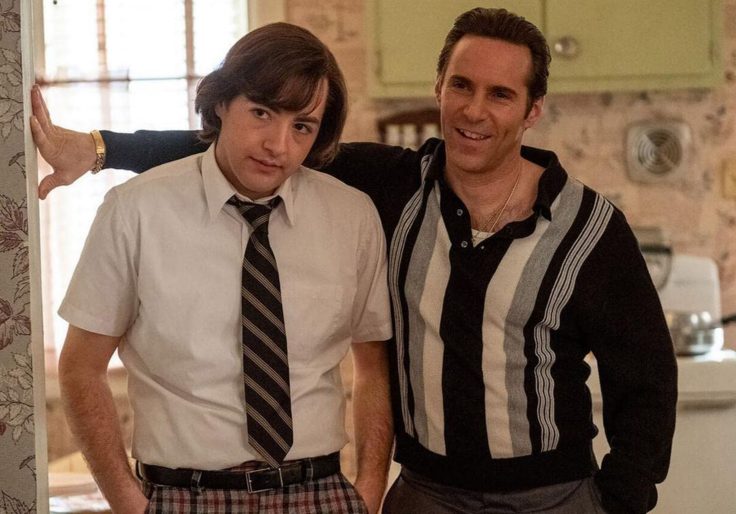In The Many Saints of Newark, a man beats his father to death and later drowns his beloved girlfriend in the ocean. And you feel nothing. In this, as in so many other ways, David Chase's new motion picture, set during the childhood and teenage years of his singular creation, Tony Soprano, is entirely unworthy of the titanic work from which it springs.
The Sopranos was able to evoke pity and fear—the emotions Aristotle said were what tragedies are designed to evoke—more powerfully than any other television series due in large measure to the terrifying quality of its spasms of violence. Every time, over the course of its 86 episodes, you began to relax and feel a sentimental attachment to its characters, The Sopranos made it clear you were just falling prey to the same comforting delusions as those characters. They believed they could act on their own monstrous impulses with impunity—or turn a blind eye to the villainy being done around them, evil from which they profited—and somehow still remain worthy people. You found them charming and winsome, and laughed when Paulie Walnuts said something stupid or Silvio curled his lip.
And then the mask would drop.
James Gandolfini's Tony Soprano would shift from a Fred Flintstone-like bumbler to a murderous beast in an instant. You saw the evil and you could not look away. The show's brilliant staging of the psychopathy to which Tony and his associates resorted either out of rage or Machiavellian purpose was not, as screen violence often is, somewhat pornographic. It was not alluring in its lubriciousness. It was gruesome, haunting, upsetting. And it had to be, otherwise the central moral point would have been lacking. Like all tragic figures, Tony Soprano had some kind of greatness in him. If he hadn't, he wouldn't have been worth the time. But that greatness was overwhelmed by his demonic nature.
In The Many Saints of Newark, we see the mob boss on whom Tony modeled himself—his uncle, Dickie Moltisanti ("many saints")—behave in much the same fashion. But for some odd reason, the movie's creative team—Chase, his cowriter Lawrence Konner, and director Alan Taylor—seem to want us to excuse Dickie's behavior. Dickie stumbles into his evil and is torn up about it, as though that makes a difference. What's more, they cast Alessandro Nivola in the part, and while Nivola is a fine actor, he comes across as a matinee idol who wandered in from another kind of picture entirely.
Everything that's good about The Many Saints of Newark has little to do with the story, plot, or themes. It looks like a million bucks. The set design, costumes, and rendering of late-1960s/early-1970s New Jersey are all sumptuous and seductive. Many Saints is a beautiful thing to look at, which is something The Sopranos never was—it was far too exact about the sociological details of the dull suburban lives Tony and his confrères were living to glamorize or beautify them. The Many Saints of Newark makes you wish you could live in Newark for a while, which, trust me, you didn't even then.
Most startling is the fact that the movie has no story. It lurches through six or seven years with no sense of pace or the passage of time. During these years, a friendly relationship between Dickie and a black numbers-runner (Leslie Odom Jr.) who was his high-school-football teammate turns unaccountably sour. We are meant to see Odom's character as the harbinger of a new era of racial confrontation, but the conflict makes no sense when it comes to the story Chase and Konner are telling.
Somehow we're supposed to gather that the tale told here creates the conditions under which young Anthony turns into older Tony Soprano, but the stumblebum kid we see here (played by Gandolfini's son Michael) seems more likely to become a water-bed salesman than he does a crime boss. Even if you're its creator, you shouldn't take a great work of popular art and strip-mine it to make a third-rate work of popular art; it's like putting an Arby's in Chartres Cathedral. The Many Saints of Newark is, in the end, a more embarrassing use of "intellectual property" than the movie versions of Aquaman... or Howard the Duck, for that matter.
